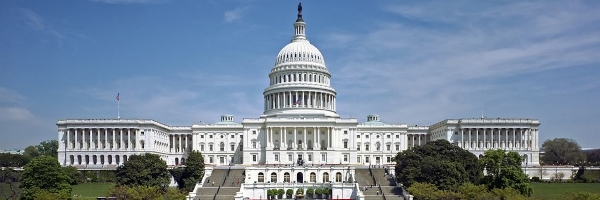






Welcome to coverage of the 2018 United States of America "Midterm" elections, provided by yours truly at KortJackson.org!
How did we get to here? (A timeline)
In 2016, a shock result led to Donald Trump securing a majority of the Electoral College, thus becoming the 45th President of the United States. Donald Trump the candidate proved to be polarizing, with few people having feelings of neutrality towards him. A plurarity of Americans took to him and became his staunchest supporters. Another plurality of Americans rejected him soundly. Donald Trump the POTUS has proven over the last two years to be just as polarizing, and some may make the argument that he actually has become more polarizing. I won't endeavor to argue either way, that's not the point of this page.
Every two years, the entirety of the voting membership of the House of Representatives are renewed at an election (435) as well as one-third of the United States Senate (plus any vacancies in which state law permits the election to coincide with the next Congressional Election). In 2016, this was coterminous with the Presidential election, and will be a Presidential election year in 2020 next. But in 2018, 2022, etc., Congressional elections are considered "Midterm" elections.
Also, the vast majority of states also hold their chief executive (Governor) elections during the "midterm" years, with only a handful holding Gubernatorial elections on presidential years or on odd number years. States have also put numerous referendum questions on the ballot during this particular midterm election, thus making November 6th, 2018 a very important day in American government.
It is worth noting: In midterm years, the party controlling the White House (President of the United States) tends to lose seats in the House and Senate. If the President holds higher approval ratings (above 50%), the losses are often mitigated. If the approval rating is around 40-49%, the losses are often substantial and get worse as the approval rating decreases. In 2006, George W. Bush's approval rating was beginning to decline considerably, and his party lost both houses of Congress. In 2010 and 2014, Barack Obama held only middling approval ratings (either substantially below water to slightly above water at best) and in 2010 lost the House and in 2014 lost the Senate). Trump's approval rating is somewhere around 40-45%, which would suggest trouble in the House. The Senate is a little different: The Senators up for election is the same group that faced the 2006 and 2012 elections, both which were very good cycles for the Dems, leading to a predominantly Democratic map up for grabs, and quite a few Senators up for re-election in states that Trump did considerably well in 2016. Normally, this would be a great night for the Republicans in the Senate, potentially adding to their slender 51-49 majority. However, polling and voting sentiment appears solidly against Trump and the Republicans, which could result in the Senate ending much the same composition or even an improved positions for the Democratic Party.
So, how do elections and government work in the United States?
This is a very good question, and far too complex to explain in this small space. In short however, most elections are run on a "First Past the Post" system, in which whomever gets the most votes (regardless of if this is a majority or not) wins the position. A few states require an outright majority, with either a second round runoff (Georgia) or a vote of the General Assembly (for Governor of Vermont) required if the 50% rule isn't met by a candidate. In Mississippi, the special election for the Senate seat vacated by Thad Cochran (and now held by Cindy Hyde-Smith, who is attempting to hold the seat), a majority is required, with a second round runoff if no candidate clinches a majority of votes.
How did we get to here? (A timeline)
In 2016, a shock result led to Donald Trump securing a majority of the Electoral College, thus becoming the 45th President of the United States. Donald Trump the candidate proved to be polarizing, with few people having feelings of neutrality towards him. A plurarity of Americans took to him and became his staunchest supporters. Another plurality of Americans rejected him soundly. Donald Trump the POTUS has proven over the last two years to be just as polarizing, and some may make the argument that he actually has become more polarizing. I won't endeavor to argue either way, that's not the point of this page.
Every two years, the entirety of the voting membership of the House of Representatives are renewed at an election (435) as well as one-third of the United States Senate (plus any vacancies in which state law permits the election to coincide with the next Congressional Election). In 2016, this was coterminous with the Presidential election, and will be a Presidential election year in 2020 next. But in 2018, 2022, etc., Congressional elections are considered "Midterm" elections.
Also, the vast majority of states also hold their chief executive (Governor) elections during the "midterm" years, with only a handful holding Gubernatorial elections on presidential years or on odd number years. States have also put numerous referendum questions on the ballot during this particular midterm election, thus making November 6th, 2018 a very important day in American government.
It is worth noting: In midterm years, the party controlling the White House (President of the United States) tends to lose seats in the House and Senate. If the President holds higher approval ratings (above 50%), the losses are often mitigated. If the approval rating is around 40-49%, the losses are often substantial and get worse as the approval rating decreases. In 2006, George W. Bush's approval rating was beginning to decline considerably, and his party lost both houses of Congress. In 2010 and 2014, Barack Obama held only middling approval ratings (either substantially below water to slightly above water at best) and in 2010 lost the House and in 2014 lost the Senate). Trump's approval rating is somewhere around 40-45%, which would suggest trouble in the House. The Senate is a little different: The Senators up for election is the same group that faced the 2006 and 2012 elections, both which were very good cycles for the Dems, leading to a predominantly Democratic map up for grabs, and quite a few Senators up for re-election in states that Trump did considerably well in 2016. Normally, this would be a great night for the Republicans in the Senate, potentially adding to their slender 51-49 majority. However, polling and voting sentiment appears solidly against Trump and the Republicans, which could result in the Senate ending much the same composition or even an improved positions for the Democratic Party.
So, how do elections and government work in the United States?
This is a very good question, and far too complex to explain in this small space. In short however, most elections are run on a "First Past the Post" system, in which whomever gets the most votes (regardless of if this is a majority or not) wins the position. A few states require an outright majority, with either a second round runoff (Georgia) or a vote of the General Assembly (for Governor of Vermont) required if the 50% rule isn't met by a candidate. In Mississippi, the special election for the Senate seat vacated by Thad Cochran (and now held by Cindy Hyde-Smith, who is attempting to hold the seat), a majority is required, with a second round runoff if no candidate clinches a majority of votes.
Image of the United States Capitol is a "public domain creation", details here.
Image of the United States Flag is a "public domain creation", details here.
